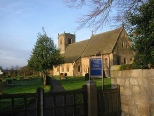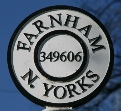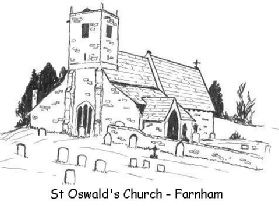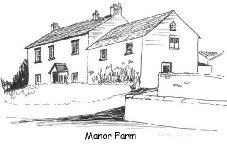A North Yorkshire
Village

St Oswald’s Farnham


The period between the withdrawal of the Romans, C 440 A.D. and the Norman Conquest,
1066 A.D. has few real sources of information. It was a time of chaos in Britain
-

There seems to be agreement among historians that the Saxon Period was an 'age of
settlements' -
The
Venerable Bede, a monk in the Northern monastery of Jarrow, writing in the 7th/8th
centuries, might help a little in dating Farnham. The country was divided into many
'kingdoms', some large, some small. Bede listed some of the 'kings'. including Oswald
of Northumbria, -
Of the rest of that turbulent
time, we know little, but it is unlikely that Farnham would have entirely escaped
the attentions of the Vikings and Norsemen and other raiders and settlers.
Four centuries
after the death of Oswald came the Norman invasion and the survey, ordered by King
William in 1080 -

History of Farnham -
King William I met with much resistance from the Saxon rulers in the north of England
and embarked on a ruthless campaign of suppression. The reduction of the value of
the land from 10 shillings to 5 shillings indicates the destruction caused -
The pre-
England was now controlled by the Norman French.